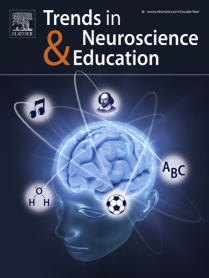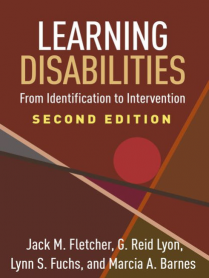When Jake was little, his development seemed pretty normal, though we noticed that he threw with his right hand and wrote with his left (and still does). And he HATED – really hated – jigsaw puzzles, even the simplest, he just had no idea how to approach them and refused to try. At 5, we had him tested – we could see that numbers were very hard for him – and they said, “This kid’s always going to have difficulties with math”, but didn’t offer any suggestions, it was as if that was just his fate, his nature, and we should all just live with it. All through school his dad worked with him, until they almost killed each other. Then it was tutors. Jake was mostly a pretty agreeable kid, smart, focused, motivated, except for math. He just couldn’t get it, and would get mad and say, “But that’s not how they explain it at school.” There was zero flexibility, I think because he understood nothing of the underlying concepts. He didn’t even know there were underlying concepts. The school didn’t seem to think there was a huge problem. He was a nice kid with a quick, inquisitive mind – a prodigious memory for information – and his verbal skills, reading, writing, were all strong. I think in a way this was misleading, because he could memorize a procedure and teachers perceived him as someone who could do his work. The problem was, he could memorize anything but understood nothing. Later, when he decided to become a history teacher, he had to pass a math test for certification in our state. He completely freaked out, but with a lot of coaching he passed by one point! Now Jake has to supervise students in homework sessions, and when they ask for math help he tells them to ask their math teacher.
Really, when I think about it, I’m exactly like my son. I’ve never been OK with math. It’s so much easier now, with technology, but if I have to do something on the spot with money for example – like figure out a tip – I get very anxious and have no instincts at all. I have to use very basic methods to figure it out.
Developmental dyscalculia is considered a specific learning disorder (SLD), defined by the DSM (5th edition) as “a neurodevelopmental disorder of biological origin manifested in learning difficulty and problems in acquiring academic skills markedly below age level and manifested in the early school years, lasting for at least 6 months; not attributed to intellectual disabilities, developmental disorders, or neurological or motor disorders.” While living examples are rarely as straightforward as diagnostic criteria might suggest, this parent’s account of her son seems to fit the DSM description: early evidence of a lifelong problem; a suggestion of biology (handedness? genetics?); the absence of other disorders. Yet when we probe the concept of a math LD beyond such generalities, it seems oddly undeveloped, especially when contrasted with our richly detailed understanding of SLDs such as dyslexia. While the estimated prevalence of dyscalculia is about 5-7%, comparable to that of dyslexia, the early identification of math difficulties in school settings is far less common.
Jody Chong, a special education teacher in the TDSB and faculty member in the JICS graduate education program, observes, “It’s really complicated. Partly, there’s such high comorbidity with other disorders, like dyslexia, ADHD, or other underlying cognitive processes like attention or working memory. And even though we all know how critical early intervention is, it’s rare that children in Grade 1 or 2 would receive support beyond the classroom for math-only challenges. But by Grade 3 or 4, we see lots of children struggling with math in our learning centres. It’s interesting – why aren’t we identifying some of the precursors earlier and providing the same level of early intervention as we do for literacy?” She wonders, is math at that early stage simply less demanding than reading? Or is the picture more complicated because the different math strands demand different kinds of skills? “With math we don’t yet have a good model or framework. We haven’t found the math equivalent of phonological awareness in reading. They thought that number sense would work that way, but it hasn’t really panned out the way they thought. You almost need a different set of indicators for each of the strands.”
OISE math education professor Zack Hawes agrees that our current constructs of specific math disabilities are poorly defined. He points out that some of the early work on SLDs emerged from research with brain damaged adults (e.g., stroke patients). This work suggested that specific brain regions underpinned specific cognitive functions. For example, some researchers speculated that dyscalculia might be due to a deficit in the brain’s ‘number module’, a region hypothesized to underlie the capacity to perform basic numerical and arithmetical tasks. Hawes suggests that “it’s a mistake to take these adult case studies and apply them to children, to assume that the adult brain functions in similar ways to the developing child’s brain.” The overly simplistic idea that a single brain region underlies a specific function conveys the message that certain learning disabilities are due to a single cause and manifest themselves as a single, isolated disability. This is rarely the case.
Zack adds that children’s performance is often contextual and inconsistent; identifying children who demonstrate consistently low math scores is not so easy. Children’s performance can vary widely across different points in time and development and depend on the specific aspects of number or mathematics being assessed. This issue of assessment is a difficult one and far from resolved. Rather than thinking of a math LD as a fixed or unitary construct, it may be more useful to conceptualize math difficulties as occurring on a spectrum along which many students move back and forth.
At the same time, studying children from a learning disabilities or deficit perspective may offer researchers valuable “back door” insights into mathematical development. Researchers have identified certain patterns of early deficits, including counting difficulties and poor retrieval of number facts, that without intervention often lead to chronic underachievement. According to Daniel Ansari, Canada Research Chair at the University of Western Ontario, “children with developmental dyscalculia typically do not undergo the same developmental trajectory with regards to the strategies they use. Most commonly . . . [they] fail to encode arithmetic facts into long term memory. They will rely on count-based strategies using their fingers or verbal counting even when their peers have moved onto retrieving the solutions to simple problems, such as 2 + 3, from memory. It seems to be at the level of encoding arithmetic problems into long-term memory, there’s a fundamental barrier in children with developmental dyscalculia.” (Understanding developmental dyscalculia: A math learning disability)
Ansari cites a landmark study (Landerl, Bevan & Butterworth, 2004) that looked at children diagnosed with dyscalculia, dyslexia, and a mix of both alongside a control group. They were asked to compare pairs of differently sized numerals that also represented different amounts. All four groups performed similarly when asked which numeral was physically larger. However, a “massive difference” appeared in the numerical quantity comparisons, in which children with dyscalculia (with or without dyslexia) were significantly slower to respond than those in the control group or with dyslexia alone. He suggests that a core difficulty understanding numerical magnitude may underlie some of the disparate expressions of dyscalculia in children. Ansari’s research group at Western has developed a quick screening test that may provide an early indication of potential problems in young children, with the important disclaimer that it is currently validated as a research tool and not a diagnostic one.
While diagnostic labels can be useful for accessing resources in school systems, it may be less important for a teacher to definitively diagnose dyscalculia than to pay attention and appropriately respond to what is going on with each child. With their vast body of clinical experience, teachers are well-positioned to recognize developmental and learning anomalies, and from her depths of experience teaching math in the early years Carol Stephenson of the JICS Lab School notes some common early indicators. “At 3 years, an inability to count 5 objects would be unusual. By 5, a continuing inability to count 10 objects showing 1:1 correspondence is a huge early marker of potential problems.” Without addressing these difficulties early on, they quickly compound and small gaps rapidly widen. Carol stresses the importance of physical and tactile experience in early math development. Working one year with a 3-year-old who couldn’t count to 3, Carol would place one object at a time in the child’s hand, close her hand around the object, and repeatedly ask her, “Do you remember how many you counted?” The child then opened her hand and dropped each object into a bucket to hear the sound it made. Over time, this slow, deliberate, and highly sensory daily practice began to bear fruit.
Other kindergarten teachers have remarked on less obviously math-focused behaviours that also make it difficult to acquire math skills, such as deficits in attention, spatial organization, or physical coordination. If a child’s approach to materials is chaotic, they likely won’t have the same urge or opportunity to count them as the child who spontaneously lines up or patterns blocks, or repeatedly orders a graduated sequence of sizes. While play can offer young children a uniquely generative environment for fostering rich math thinking, this will only happen when the adults in the setting make it a priority to help children develop increasingly complex, differentiated and structured forms of play with thoughtfully selected materials, as well as to explicitly draw attention to the embedded math. Carol emphasizes that to notice, make sense of, and respond effectively to children’s struggles requires solid knowledge of mathematics and belief in its value. “It’s not good enough to say ‘They’re just babies.’ We need to have kindergarten teachers who love math!”
Following individual children over time, Nick Song of the Lab School’s special education team has seen how early counting problems can subsequently manifest themselves as failures to grasp the workings of our base ten number system. He has found it helpful to work with multiple representations of the number system using materials such as Rekenreks, ten-frames, and base-10 blocks. Zack Hawes adds that children with difficulties often have trouble mapping written symbols onto quantities and may require extra time and opportunity to make those connections explicit.
As we saw in the opening sketch of a child with chronic math struggles, children can be adept at developing strategies that obscure fundamental conceptual deficits. While relative strengths in areas such as language can help to scaffold understanding in areas of weakness, they can also serve to mask those weaknesses; as Nick puts it, “putting a band-aid on the problem but not fixing the issue”. He recalls a child who demonstrated poor 1:1 correspondence in Grade 1 and had difficulty decomposing simple numbers in Grade 2. Two years later, after much tutoring and learning of various “tricks and algorithms”, this child could come up with correct answers to many questions, but continued to lack core flexibility with numbers. With our currently limited understanding of atypical math development, might this at times be the best we can hope for? Realistically, says Nick, “as a society, the knowledge you need in math is not high. People can get through life with Grade 7 math ability.”
Mathematics disabilities can have a serious impact on health and well-being in adulthood, affecting education, employment, social relations, and overall life satisfaction. It is therefore imperative to identify effective instructional approaches that don’t give up on conceptual understanding for children with persistent math challenges. The website LD at School of the Ontario Learning Disabilities Association offers helpful ideas for parents and educators working with children who struggle in this area.
Explicit work with number lines, especially embedded in engaging materials such as board games, has been shown to have lasting benefits, naturally integrating the spatial and numerical dimensions of mathematics. Recruiting other areas of skill may also be helpful. Spatial reasoning interventions, for example, appear to have a significant effect on numerical reasoning (e.g., Cheng and Mix, 2014), though the applicability of these findings to less typical development is relatively unexplored. One small study showed the positive impact of a 10-week Origami program on the spatial and numerical skills of children with math difficulties (Krisztian et al., 2015). However, the authors also mention the challenge of factoring out the significant motivational aspects of such an intervention, a welcome reminder that motivation, engagement, and other social and emotional factors (such as anxiety) all play critical roles in math learning.
As with many learning difficulties, children with a math LD can thrive when given sufficient time and opportunity for thoughtful practice, coupled with explicit instruction that incrementally breaks down concepts into workable chunks. Existing programs such as Singapore Math or JUMP Math are built around such principles. While the current emphasis in classrooms on a “growth mindset” may not always ring true to a child whose skills have consistently lagged far behind those of peers, the delighted confidence that comes from genuine understanding sets the ground for further learning. As Zack Hawes puts it, “Once one thing clicks, other things start to come together.”

Author
Julie Comay
Faculty in the Master of Arts in Child Study and Education program and former elementary teacher at the Dr. Eric Jackman Institute of Child Study




